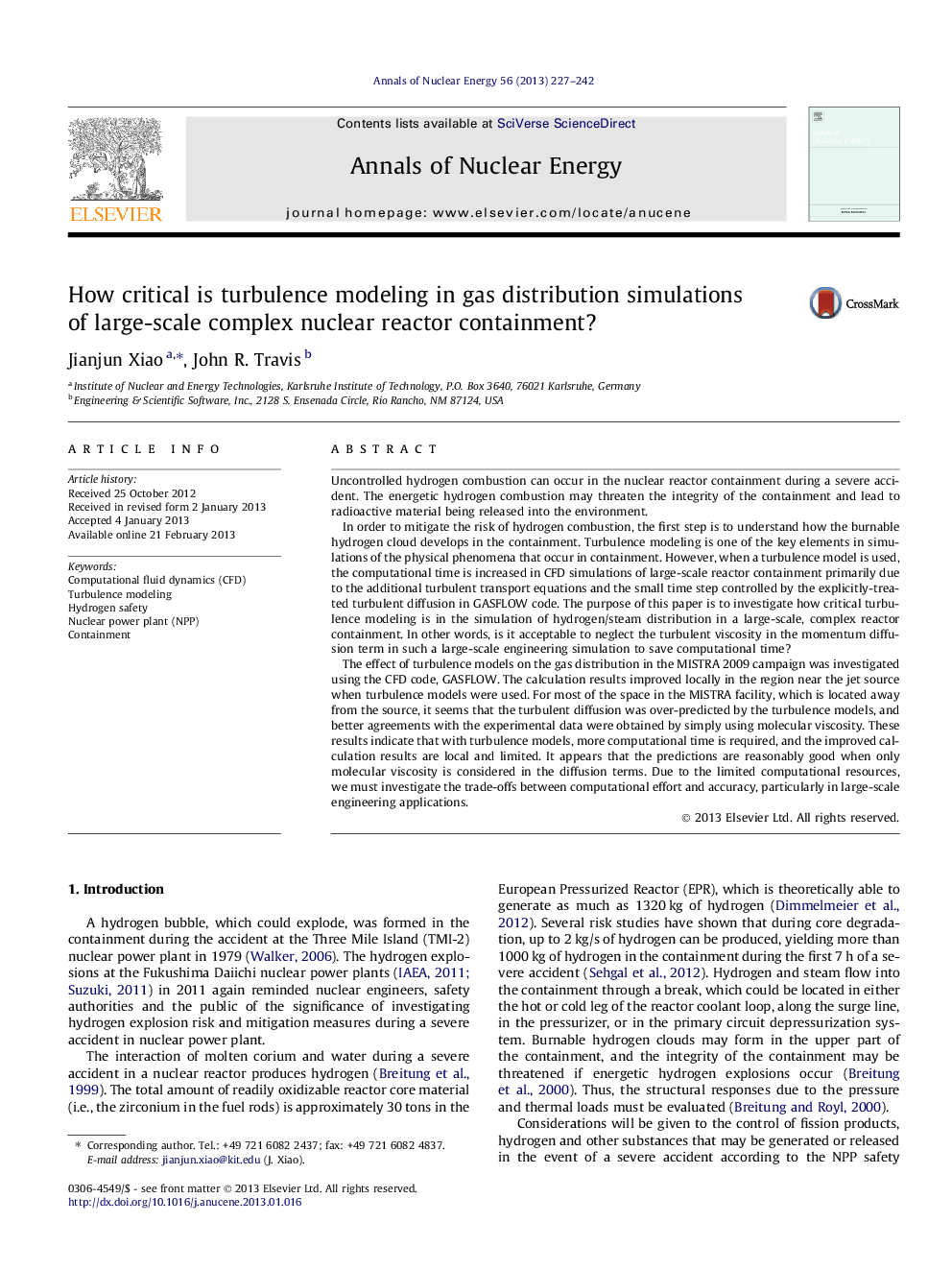| Article ID | Journal | Published Year | Pages | File Type |
|---|---|---|---|---|
| 1728730 | Annals of Nuclear Energy | 2013 | 16 Pages |
Uncontrolled hydrogen combustion can occur in the nuclear reactor containment during a severe accident. The energetic hydrogen combustion may threaten the integrity of the containment and lead to radioactive material being released into the environment.In order to mitigate the risk of hydrogen combustion, the first step is to understand how the burnable hydrogen cloud develops in the containment. Turbulence modeling is one of the key elements in simulations of the physical phenomena that occur in containment. However, when a turbulence model is used, the computational time is increased in CFD simulations of large-scale reactor containment primarily due to the additional turbulent transport equations and the small time step controlled by the explicitly-treated turbulent diffusion in GASFLOW code. The purpose of this paper is to investigate how critical turbulence modeling is in the simulation of hydrogen/steam distribution in a large-scale, complex reactor containment. In other words, is it acceptable to neglect the turbulent viscosity in the momentum diffusion term in such a large-scale engineering simulation to save computational time?The effect of turbulence models on the gas distribution in the MISTRA 2009 campaign was investigated using the CFD code, GASFLOW. The calculation results improved locally in the region near the jet source when turbulence models were used. For most of the space in the MISTRA facility, which is located away from the source, it seems that the turbulent diffusion was over-predicted by the turbulence models, and better agreements with the experimental data were obtained by simply using molecular viscosity. These results indicate that with turbulence models, more computational time is required, and the improved calculation results are local and limited. It appears that the predictions are reasonably good when only molecular viscosity is considered in the diffusion terms. Due to the limited computational resources, we must investigate the trade-offs between computational effort and accuracy, particularly in large-scale engineering applications.
► Numerical simulations of MISTRA 2009 campaign with various turbulence models were performed. ► The effect of turbulence modeling in simulations of gas distributions in large scale containments was investigated. ► Trade-offs between computational effort and accuracy should be considered in large-scale engineering applications.
